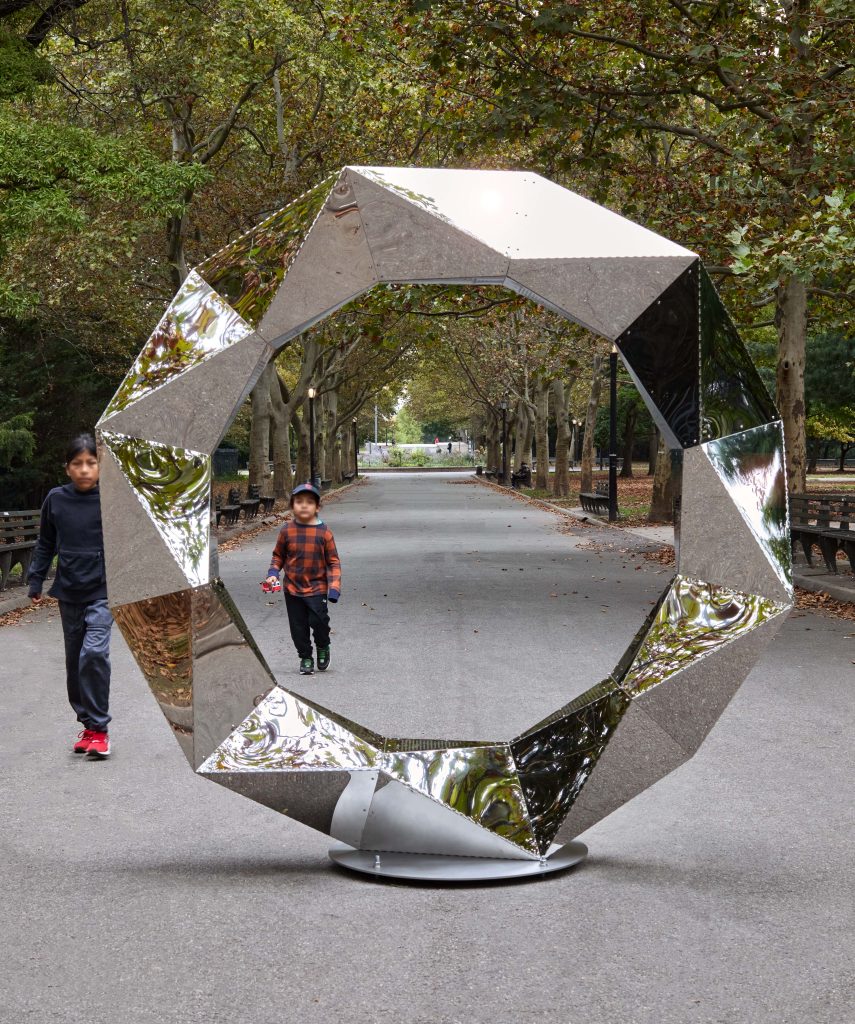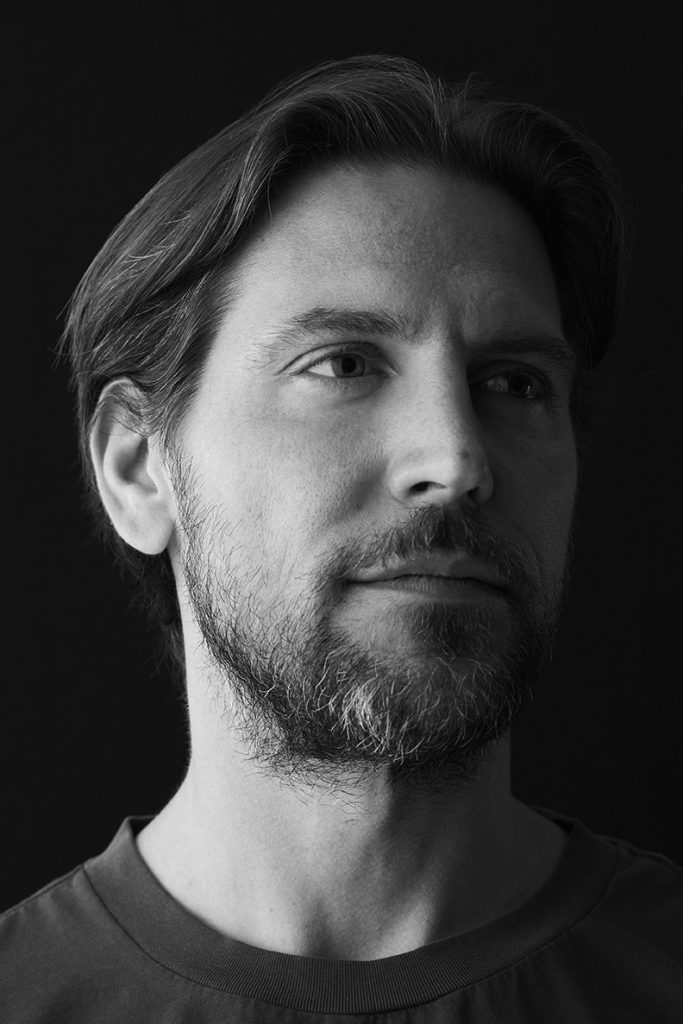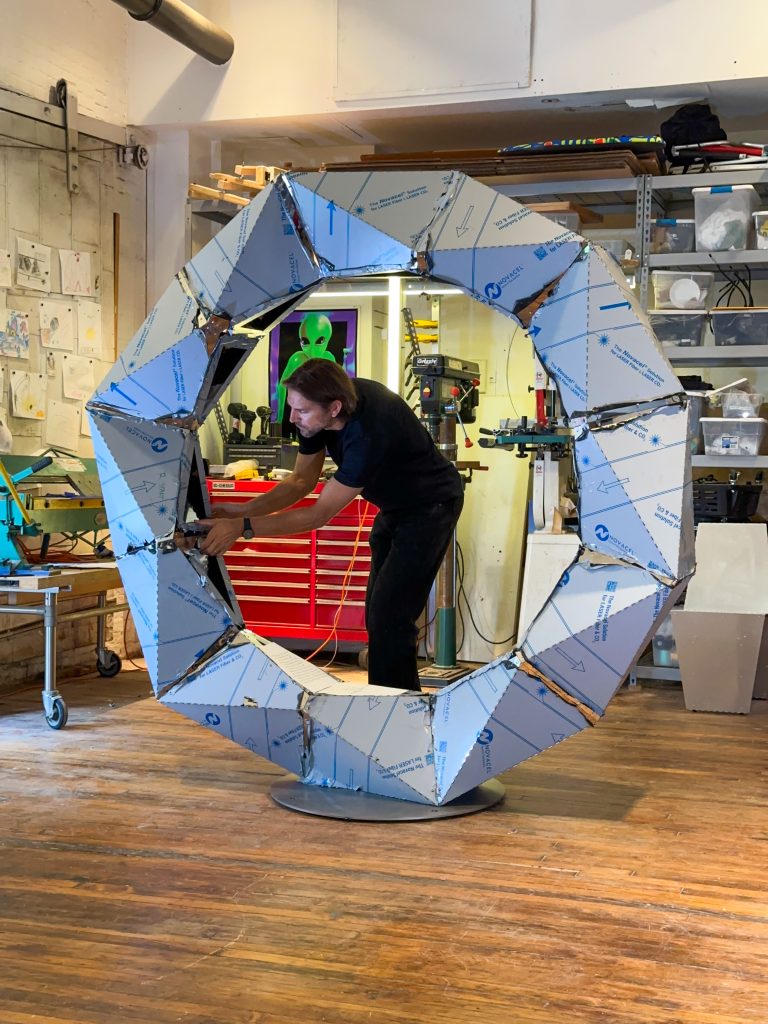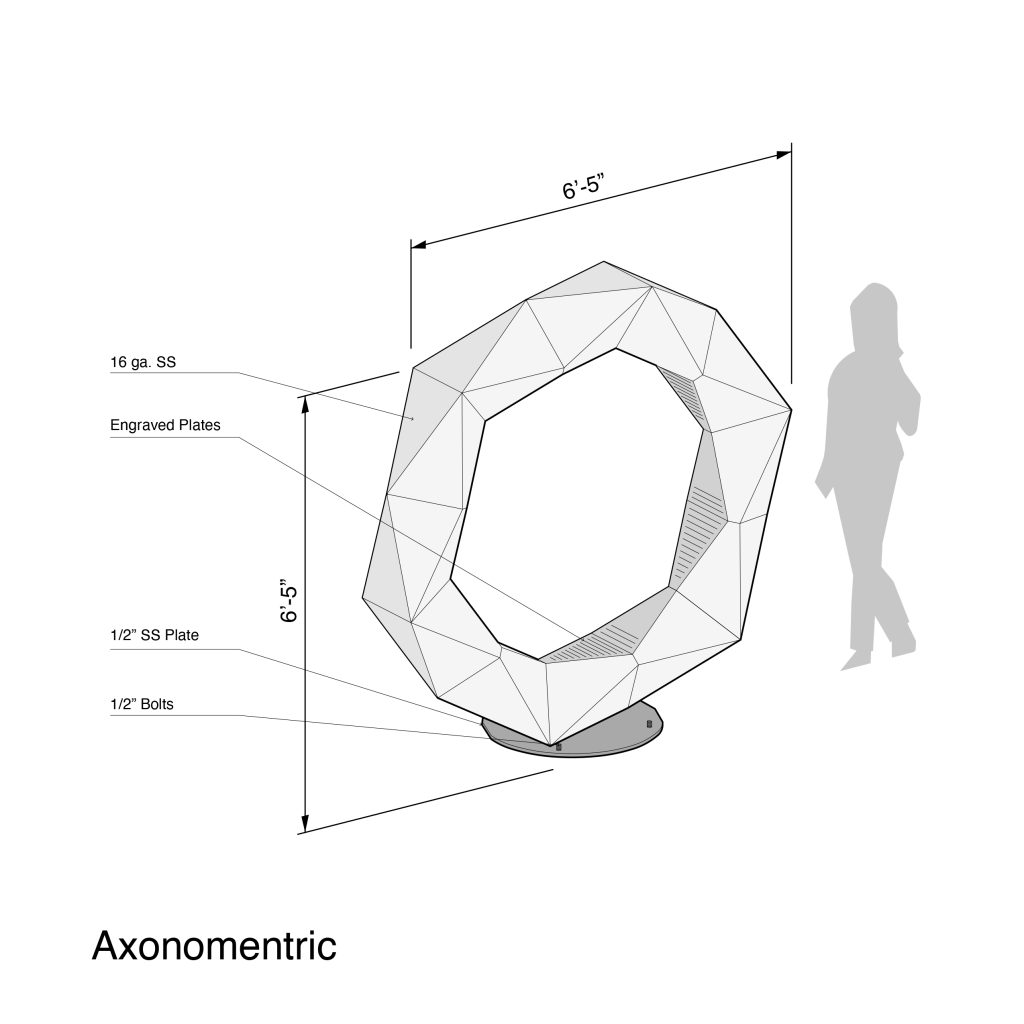
Courtesy Drew Seskunas
By MOHAMED FARGHALY
mfarghaly@queensledger.com
Drew Seskunas, a Queens-based architect and artist, has been selected as a recipient
of the prestigious 2024 Art in the Parks: Alliance for Flushing Meadows Corona Park
Grant and has since built a momentous sculpture. The grant, which is now in its fifth
year, is designed to support the creation of two site-specific artworks by local artists
within Flushing Meadows-Corona Park. These installations aim to enhance the cultural
landscape of the park and offer new opportunities for engagement through art and
programming. Each grantee is awarded $10,000 to realize their vision, and Seskunas
was chosen and in turn created, ‘What is the Opposite of a Black Hole?’
The Art in the Parks initiative, organized by the Alliance for Flushing Meadows-Corona
Park, helps to transform public spaces into vibrant cultural destinations. The grant
supports the development of art projects that engage the local community while
celebrating the park’s history and significance. For Seskunas, the creation of this
sculpture was an opportunity to explore and highlight the scientific contributions of
remarkable individuals who lived in Queens, a borough with a rich yet often overlooked
history of scientific innovation.
Seskunas grew up in Baltimore before moving to New York nearly two decades ago,
where he pursued graduate studies in architecture. With a deep interest in the
relationship between the built environment and the human experience, Drew’s work
reflects a fascination with how the spaces we create shape our understanding of reality.
Initially trained in traditional architecture, his career evolved when he spent several years
working in Europe with a Belgian artist. This experience expanded his perspective,
leading him to blend architecture with art, furniture design, and sculpture.

He believes in the interconnectedness of all creative fields and pushes the boundaries of
what it means to be an architect, continually challenging the notion that one must strictly
belong to a singular discipline. He has since founded a practice in Brooklyn, called
SAW.EARTH, where he works directly with materials, developing a hands-on approach
to design that allows him to connect more deeply with his work and inspire others,
especially young architects, to do the same.
The ‘What is the Opposite of a Black Hole?’ sculpture, located adjacent to the New York
Hall of Science, is a striking prismatic ring made from a mirror-polished material. The
ring is engraved with the names and stories of six influential scientists who lived in
Queens, including Dr. Marie Maynard Daly, the first African American woman to receive
a Ph.D. in chemistry in the United States, and Dr. Lisa Randall, a leading physicist
known for her research in higher dimensions and particle physics.

“The idea was to create a sculpture that celebrated the stories of these six scientists that
lived in Queens, and I thought, wouldn’t it be interesting to kind of create a sculpture that
celebrated all these people that you know, I don’t think a lot of people know about, but
they contributed so much to our understanding of the world,” Seskunas said.
In creating the sculpture, Seskunas sought to celebrate the achievements of scientists
whose contributions are not widely known, yet have had a profound impact on the way
we understand the universe.
“I’ve always just been interested in kind of the relationship between the human world and
like the world that we build for ourselves and the world that we inhabit, how we interpret,
understand everything else through that world,” Seskunas said.
The concept for the artwork was inspired by a visit to the New York Hall of Science,
where Seskunas pondered the concept of a black hole—an object in space that absorbs
everything around it, including light.

The process of developing and constructing the sculpture took nearly a year. After initial
research and idea development, Seskunas spent three months refining the concept and
designing the sculpture. Once the design was finalized, he dedicated another six months
to fabricating the piece in his studio, working closely with materials to bring his vision to
life. The installation, which was completed in October 2024, will remain in place for one
year.
“When you make a sculpture in a really highly trafficked public park like Flushing
Meadows, you know you have to deal with how people treat it,” he said. “I think that was
probably one of the most difficult things. Like if somebody accidentally did something to
it, that it wouldn’t get damaged. There’s a downside to having it in such a public place,
but the upside is that you really get to interact with it, and for me, that’s the only point of
doing it. To try to create something around how I see and understand the world, and then
try to connect, create connections with other people through that piece.”
The design process, while complex, was an incredibly personal and fulfilling experience
for Seskunas.
“I really think that everything in the world that we inhabit is valid and interesting,
everything from like, a door handle to a chair to a church or a large building, or the
artwork that we make, and that’s kind of what’s so special about it, “he said. “I think it’s
all part of some kind of secret language. And how we communicate, we don’t really know
exactly what the language is, but we all tend to understand it, and it helps us kind of
communicate in ways that we don’t typically communicate.”
Seskunas admitted that one of the most gratifying moments came when he completed
the installation. The public reception to the sculpture has been overwhelmingly positive.
“I grew up loving Legos, so I always like to design sculptures that are part of systems
like that,” he said. “And I think there’s a relationship between what are the parts that
you’re making and what the end result is.”
As for the legacy of the sculpture, Seskunas hopes it will inspire visitors, particularly
those from Queens, to learn more about the extraordinary individuals who contributed to
scientific progress.
In addition to his current project, Seskunas is involved in a number of exciting
endeavors. He is leading a student workshop at the New York Institute of Technology,
where students are designing and constructing a greenhouse for the School Street
Community Garden in Williamsburg. Additionally, Seskunas is working on a new series
of lighting fixtures, set to debut at Nomia, a fashion and design store in Williamsburg.


